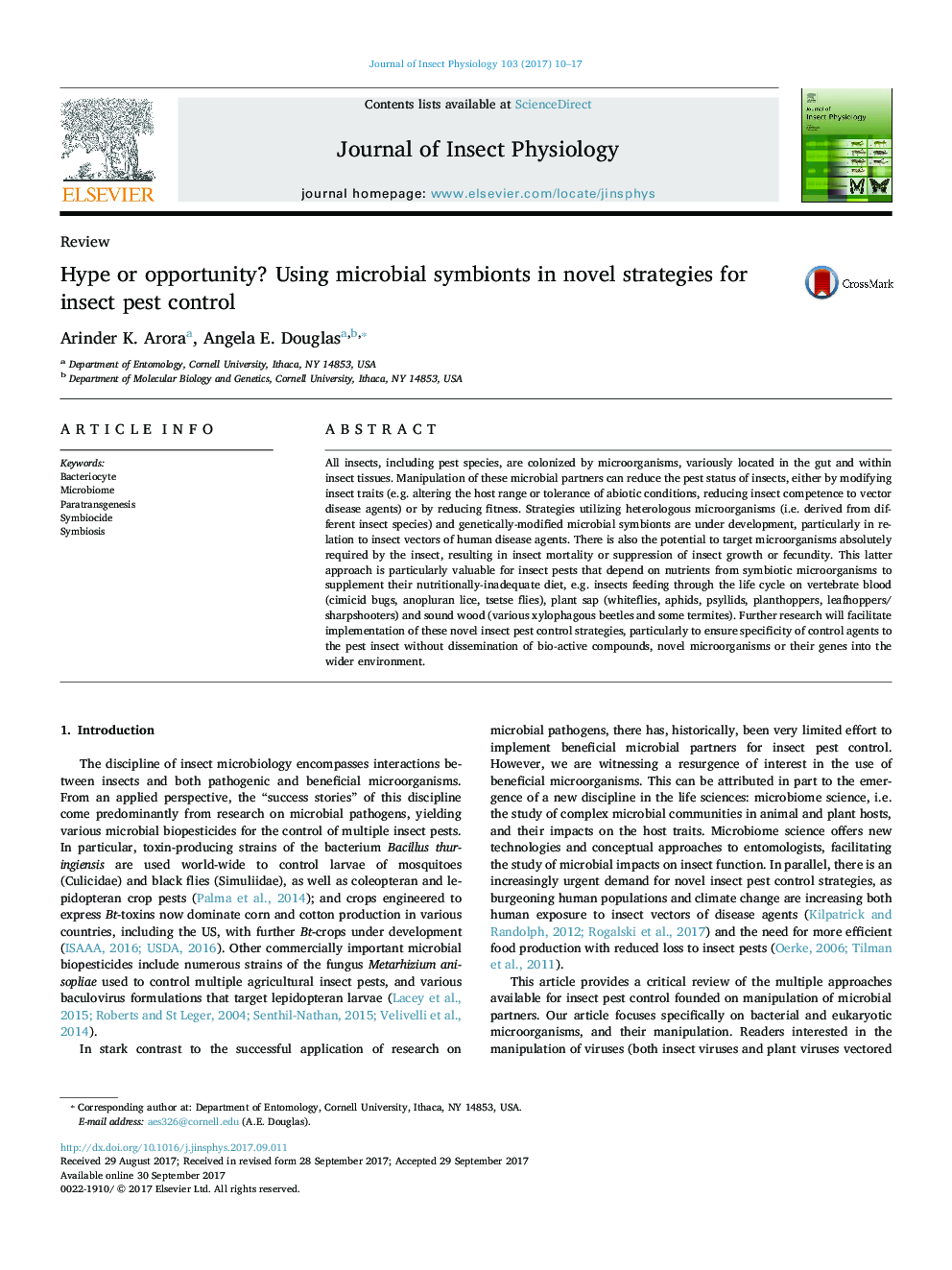| کد مقاله | کد نشریه | سال انتشار | مقاله انگلیسی | نسخه تمام متن |
|---|---|---|---|---|
| 5593078 | 1570969 | 2017 | 8 صفحه PDF | دانلود رایگان |

- All insects possess microorganisms that are benign or beneficial.
- Heterologous microorganisms from insect other species can modify insect traits.
- Microbial partners can be modified to kill insect pests or insect-vectored pathogens.
- Some insect pests can be controlled by targeting their obligate microbial partners.
- Specificity and biological containment are essential for microbe-based controls.
All insects, including pest species, are colonized by microorganisms, variously located in the gut and within insect tissues. Manipulation of these microbial partners can reduce the pest status of insects, either by modifying insect traits (e.g. altering the host range or tolerance of abiotic conditions, reducing insect competence to vector disease agents) or by reducing fitness. Strategies utilizing heterologous microorganisms (i.e. derived from different insect species) and genetically-modified microbial symbionts are under development, particularly in relation to insect vectors of human disease agents. There is also the potential to target microorganisms absolutely required by the insect, resulting in insect mortality or suppression of insect growth or fecundity. This latter approach is particularly valuable for insect pests that depend on nutrients from symbiotic microorganisms to supplement their nutritionally-inadequate diet, e.g. insects feeding through the life cycle on vertebrate blood (cimicid bugs, anopluran lice, tsetse flies), plant sap (whiteflies, aphids, psyllids, planthoppers, leafhoppers/sharpshooters) and sound wood (various xylophagous beetles and some termites). Further research will facilitate implementation of these novel insect pest control strategies, particularly to ensure specificity of control agents to the pest insect without dissemination of bio-active compounds, novel microorganisms or their genes into the wider environment.
138
Journal: Journal of Insect Physiology - Volume 103, November 2017, Pages 10-17